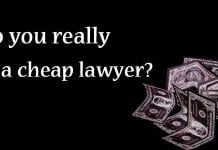In this article I examine the doctrine of judicial estoppel in the context of post-bankruptcy litigation of claims, assets or causes of action omitted from a debtor’s bankruptcy filing, examining the doctrine’s application under federal law in the Third Circuit Court of Appeals and New Jersey state courts.
Under federal law, a debtor is required to make truthful and accurate financial disclosures. In many instances, a debtor may intentionally or inadvertently omit disclosing an asset or potential asset in his or her bankruptcy filing. When the debtor does so, and then subsequently files a lawsuit to recover damages on the omitted claim – thus adopting an inconsistent position than that which was represented to the bankruptcy court – the doctrine of judicial estoppel may serve to bar the debtor’s subsequently filed claim.
Judicial estoppel is grounded in the principle of protecting the integrity of the court system by barring litigants from adopting inconsistent positions in more than one legal proceeding. The doctrine is illustrated as follows: “The principle is that if you prevail in Suit # 1 by representing that A is true, you are stuck with A in all later litigation growing out of the same events.” Kimball Int’l v. Northern Metal Prods., 334 N.J. Super. 596, 607 (App. Div. 2000), certif. denied, 167 N.J. 88 (2001). Thus, “[W]hen a party successfully asserts a position in a prior legal proceeding, that party cannot assert a contrary position in subsequent litigation arising out of the same events.” Kress v. La Villa, 335 N.J. Super. 400, 412 (App. Div. 2000), certif. denied, 168 N.J. 289 (2001). Accord New Hampshire v. Maine, 532 U.S. 742, 749 (2001). As the United States Supreme Court explained, the doctrine is used to “prevent the perversion of the judicial process” by “prohibiting parties from deliberately changing positions according to the exigencies of the moment.” Id. at 750.
The Third Circuit has identified the following criteria for determining when seemingly inconsistent litigation stances justify application of judicial estoppel:(1) The party to be stopped must have taken two positions that are irreconcilably inconsistent;(2) The party changed his or her position in bad faith –i.e., with intent to play fast and loose with the court .(3) The doctrine is tailored to address the harm identified and no lesser sanction would adequately remedy the damage done by the litigant’s misconduct.In re Kane, 628 F.3d 631, 638 (3d Cir. 2010) (citing Montrose Medical Group Participating Savings Plan v. Bulger, 243 F.3d 773 (3d Cir. 2001).
In addition, citing equitable principles the Third Circuit requires the party to be estopped be given a meaningful opportunity to provide an explanation for the changed position. Kane, 328 F.3d at 638-369 (citing Krystal Cadillac-Olds GMC Truck, 337 F.3d 314, 319-320 (3d Cir. 2001). The Third Circuit’s application of judicial estoppel does not require that a party must have benefitted from their prior position in order to be judicially estopped from subsequently asserting an inconsistent one. Ryan Operations, 81 F.3d at 361. The presence of a benefit received is merely a factor in determining whether the evidence would support a conclusion of bad faith. Krystal, 337 F.3d at 324.
In the bankruptcy context, the Third Circuit recognizes that “a rebuttable inference of bad faith arises when averments in the pleadings demonstrate both knowledge of a claim and a motive to conceal that claim in the face of an affirmative duty to disclose.” Krystal, 337 F.3d at 321. As one New Jersey District Court judge commented, “[A] person seeking to discharge his debts in bankruptcy [has] a motive to conceal potential assets.” Clark v. Strober-Haddonfield Group, Inc., 2008 U.S. Dist. LEXIS 58865, *7 (D.N.J. July 29, 2008). Because non-disclosure of an asset or claim raises only a rebuttable presumption of bad faith, the Third Circuit has expressly left open the question of “whether such nondisclosure [in bankruptcy schedules], standing alone, can support a finding that a plaintiff has asserted inconsistent positions within the meaning of the judicial-estoppel doctrine.” Ryan Operations, 81 F.3d at 362 (citing Oneida Motor Freight, Inc. v. United Jersey Bank, 848 F.2d 414, 419 (3d Cir. 1988), cert. denied, 488 U.S. 967 (1988)).
The New Jersey Supreme Court has instructed, a “totality of circumstances” approach must be used to determine whether to invoke judicial estoppel. Ali v. Rutgers, 166 N.J. 280 (1991). For judicial estoppel purposes, successful maintenance of a position requires only “that the party was allowed by the court to maintain its position,” and not that the “party prevailed in the underlying action.” Cummings v. Bahr, 295 N.J. Super. 374, 387 (App. Div. 1996). Accord Chattin v. Cape May Greene, Inc., 243 N.J. Super. 590, 620 (App. Div. 1990), aff’d, 124 N.J. 520 (1991). In other words, the party must have convinced the court to accept its position. Ali, 166 N.J. at 288 (2000)(internal citation omitted).
Similar to the Third Circuit’s test, New Jersey treats judicial estoppel as an extraordinary remedy to be applied only when a party’s inconsistent behavior will otherwise result in a miscarriage of justice. See State v. Jenkins, 178 N.J. 347 (2004)(quoting Kimball Int’l, 334 N.J. Super. at 608). Unlike its federal counterpart, New Jersey’s judicial estoppel test does not require a finding of bad faith. See Ruffin v. Kinder Morgan Liquids Terminal, LLC, 2009 N.J. Super. Unpub. LEXIS 251, *6 (App. Div. 2009), certif. denied, 198 N.J. 473 (2009) (quoting City of Atlantic City v. Cal. Ave. Ventures, LLC, 23 N.J. Tax 62, 68 ( App. Div. 2006)(“[A] finding of ‘bad faith’ is not a requirement under New Jersey law.”).
Click here to read to read a more in-depth discussion on this subject.



































